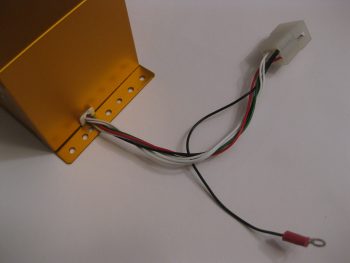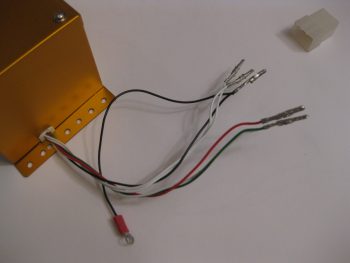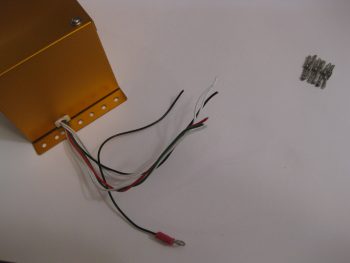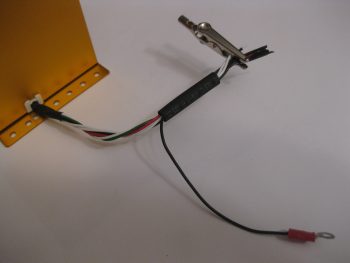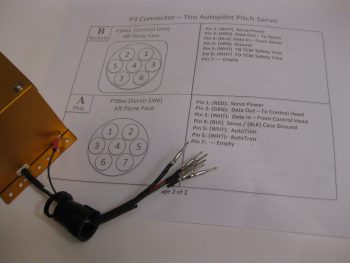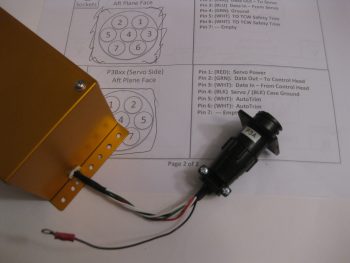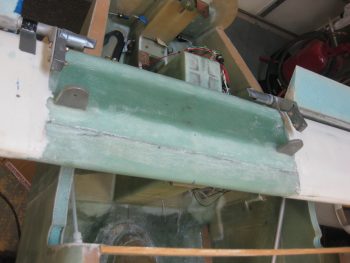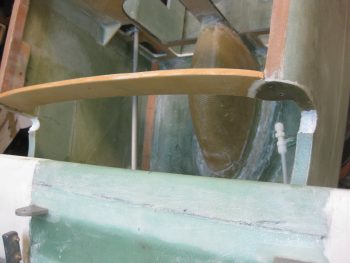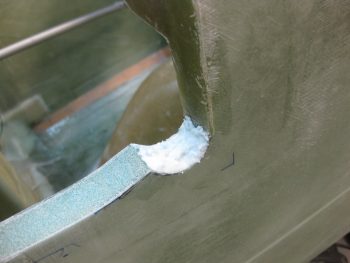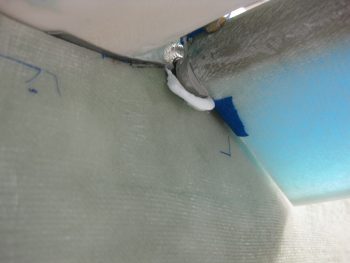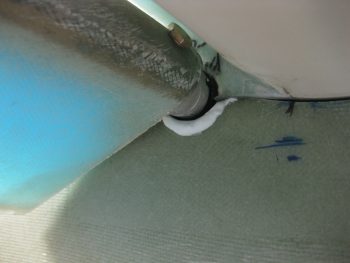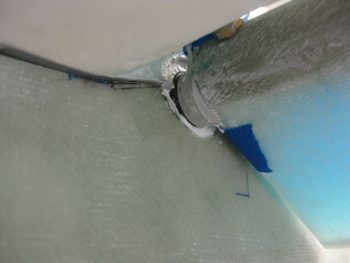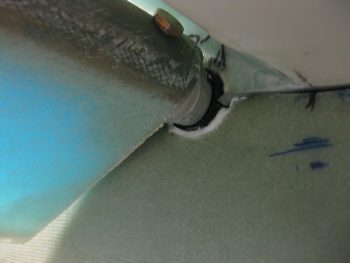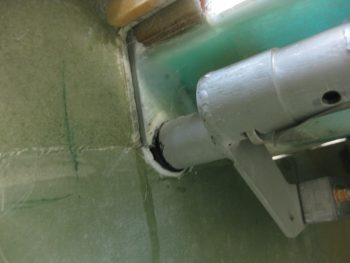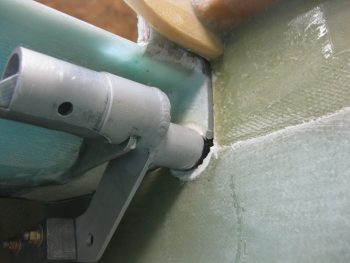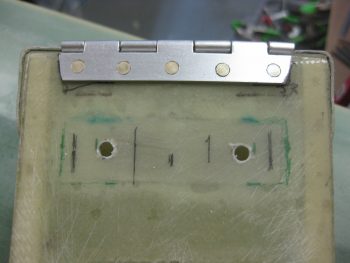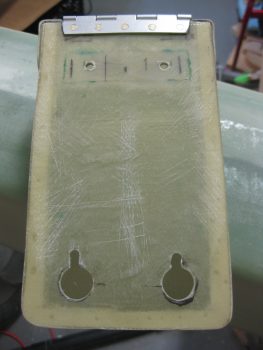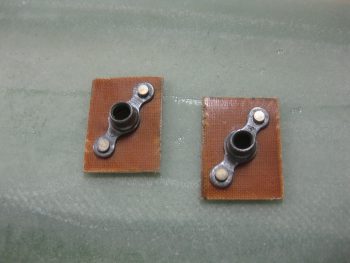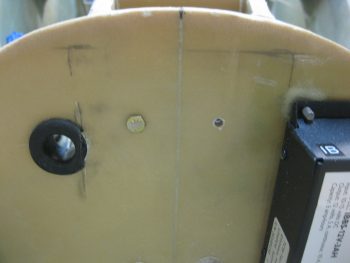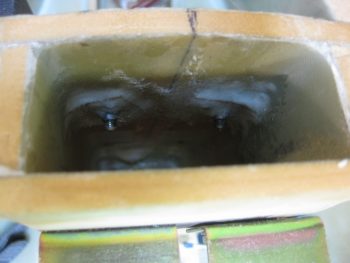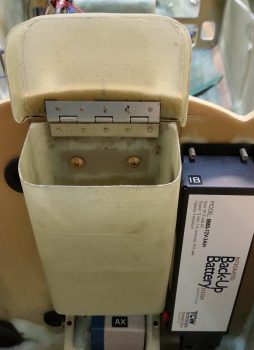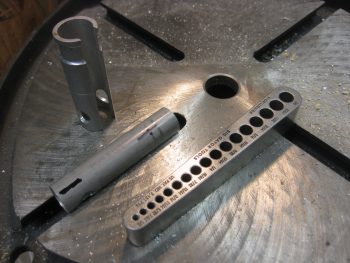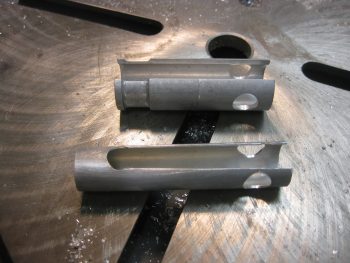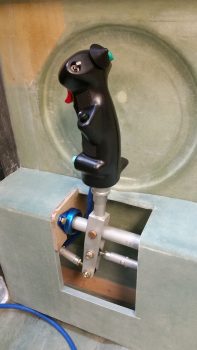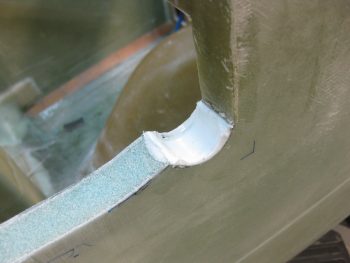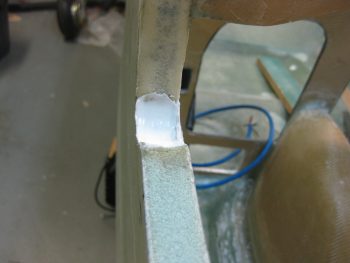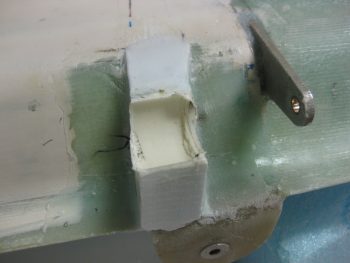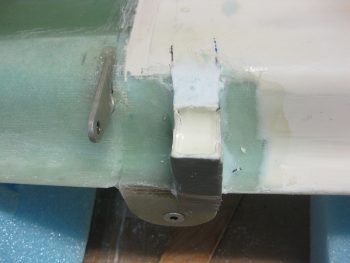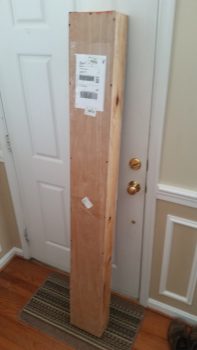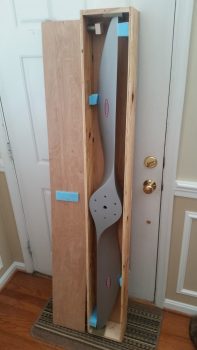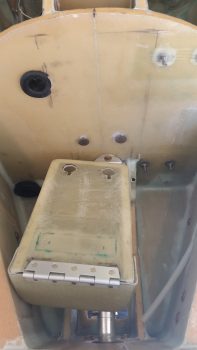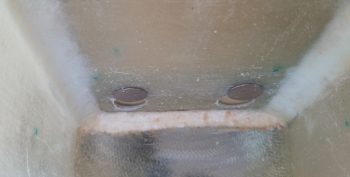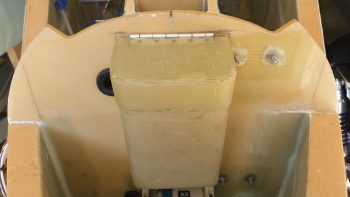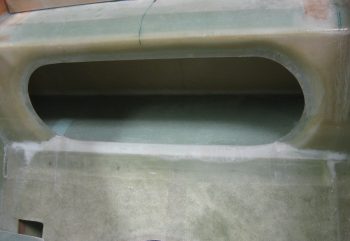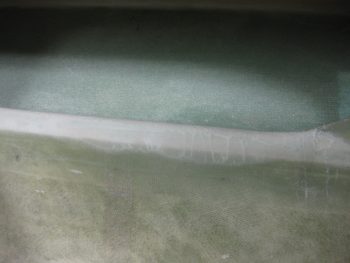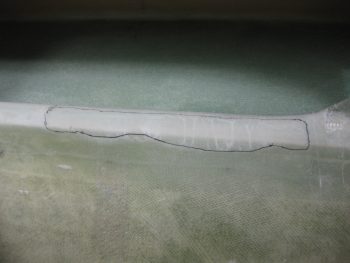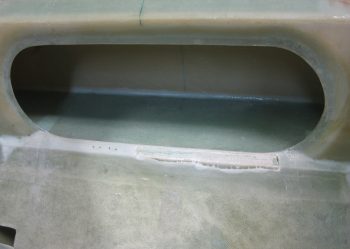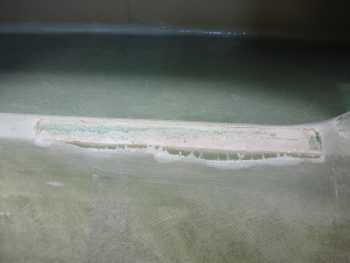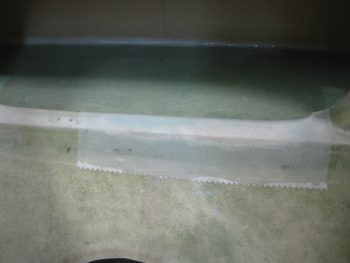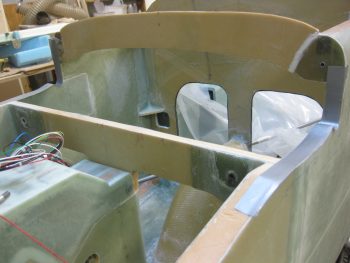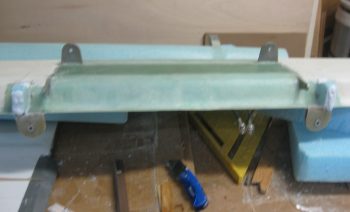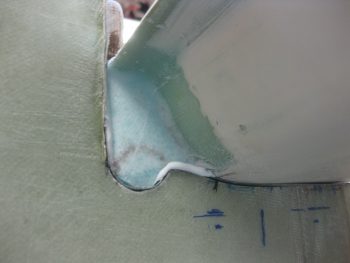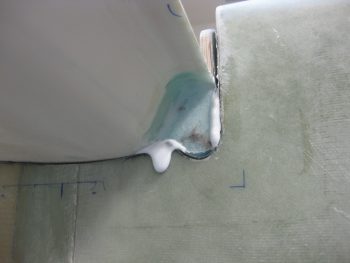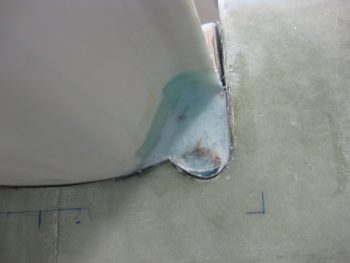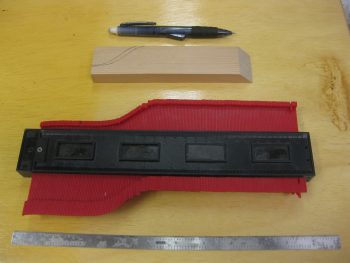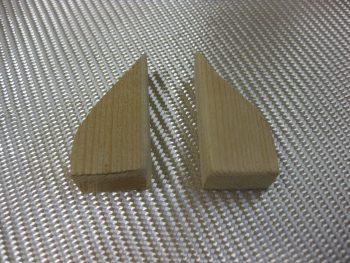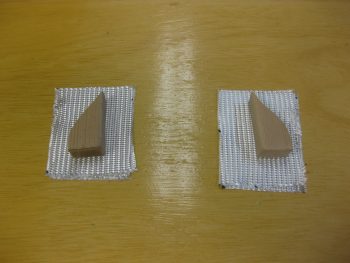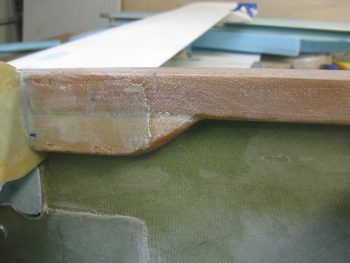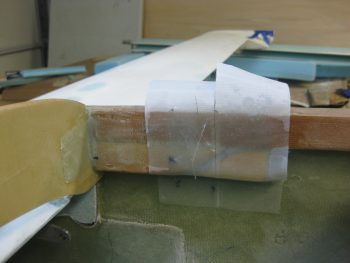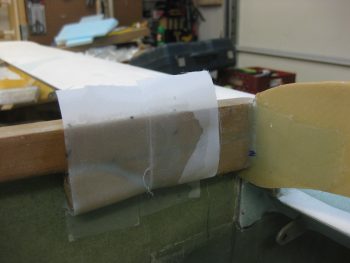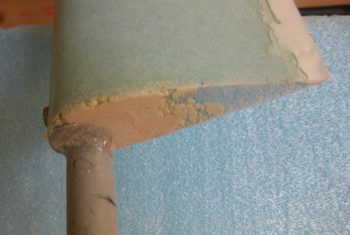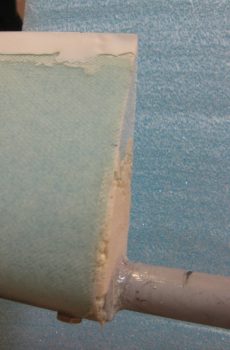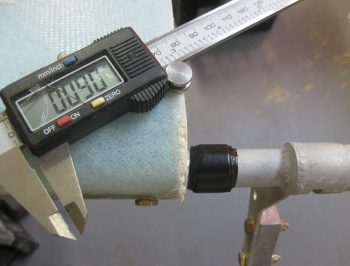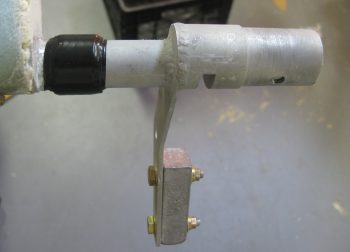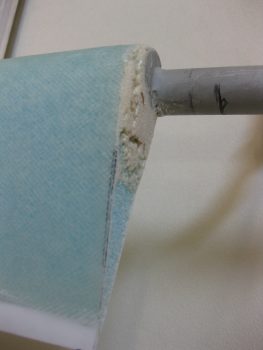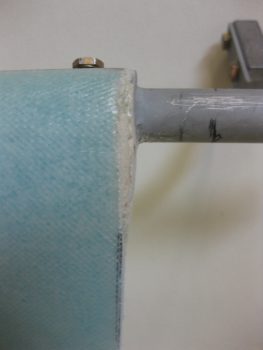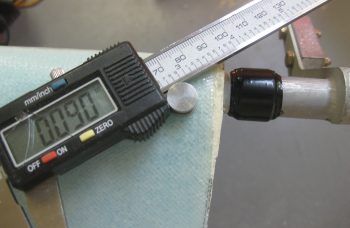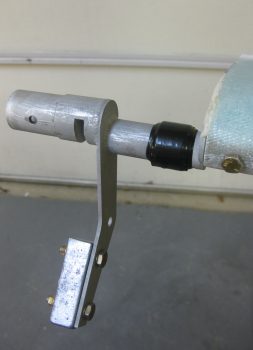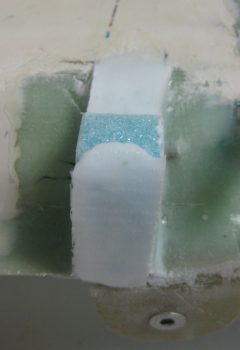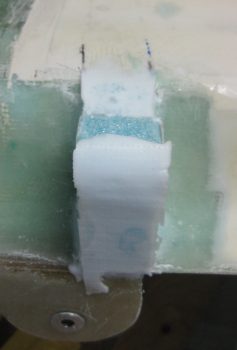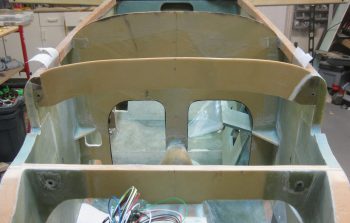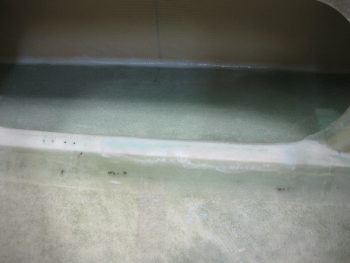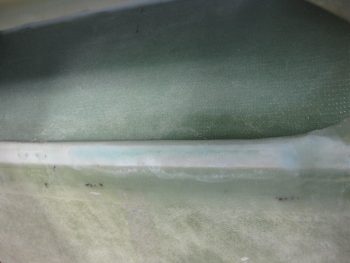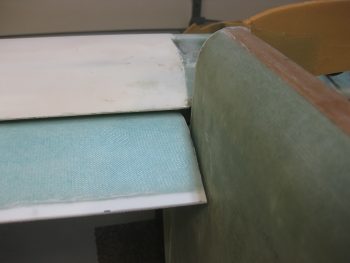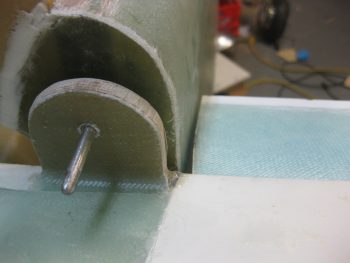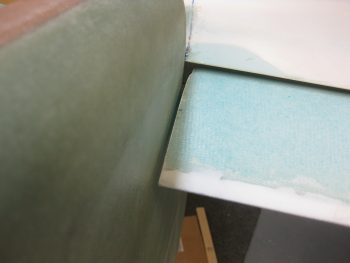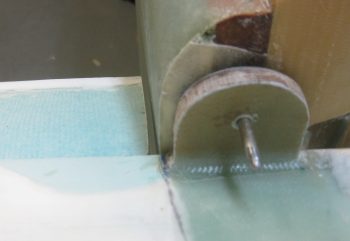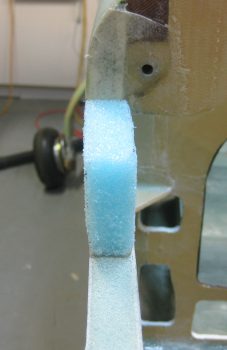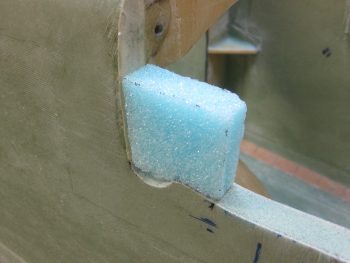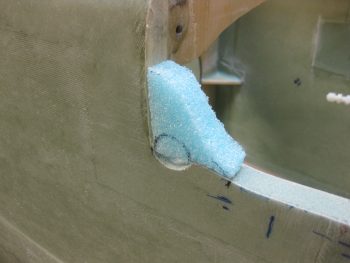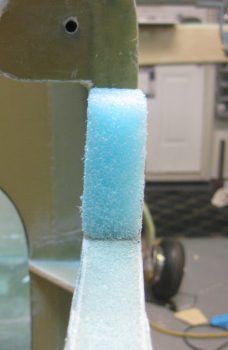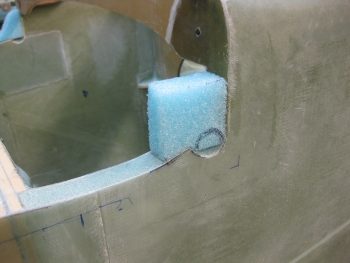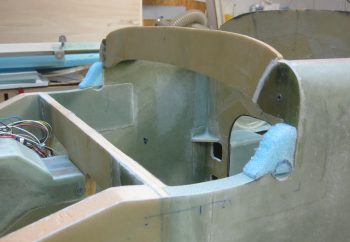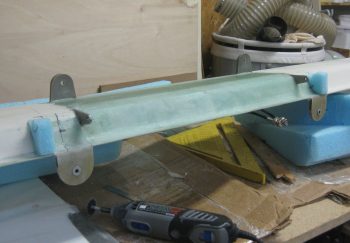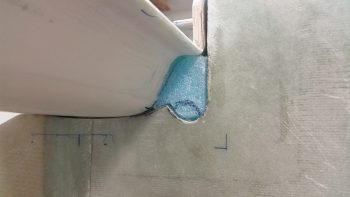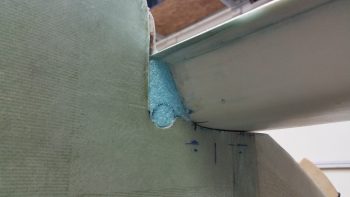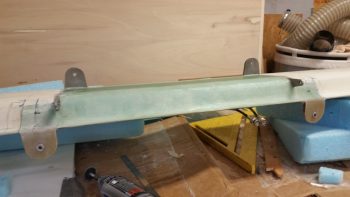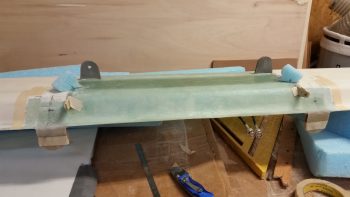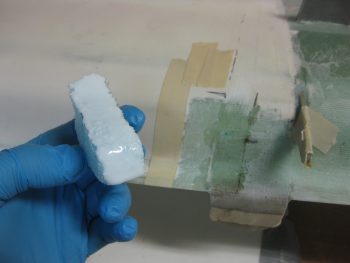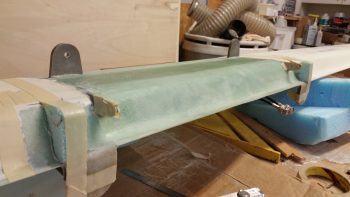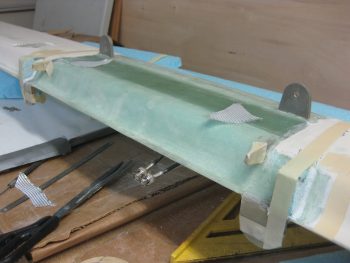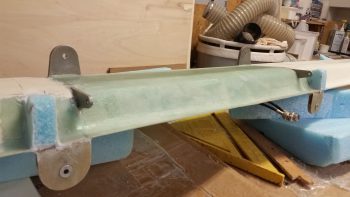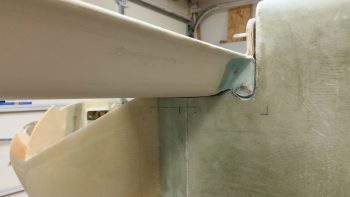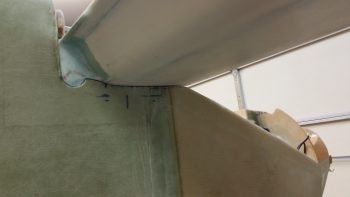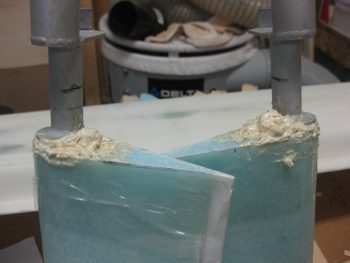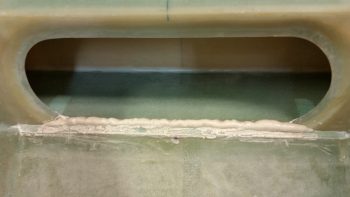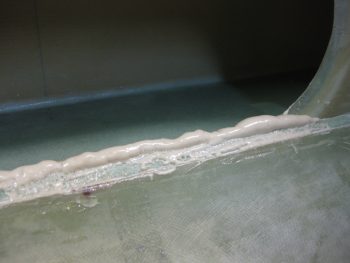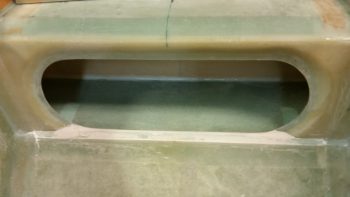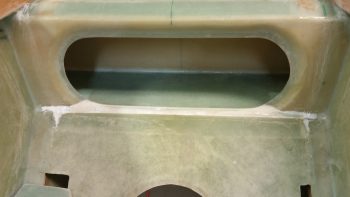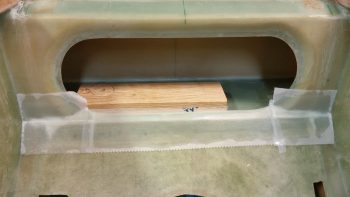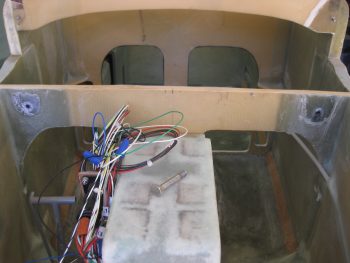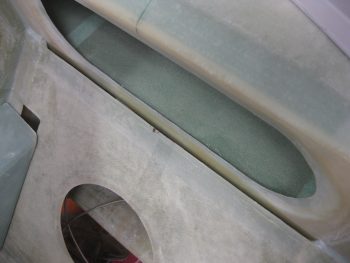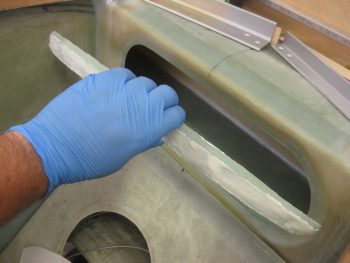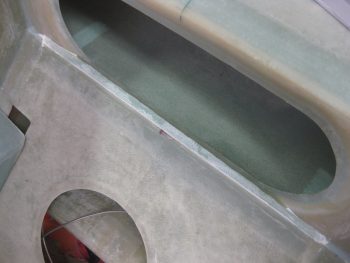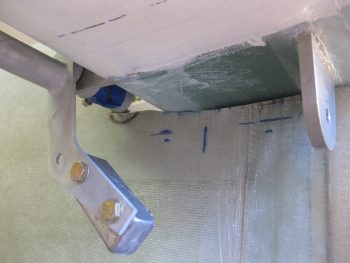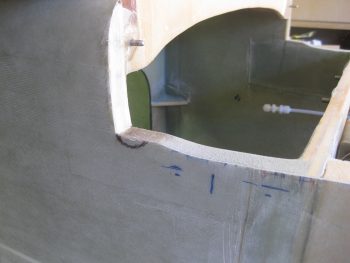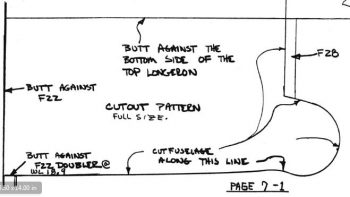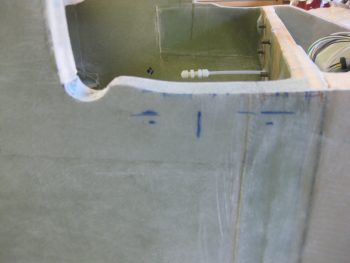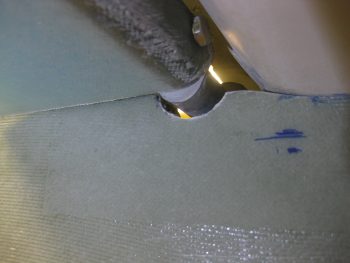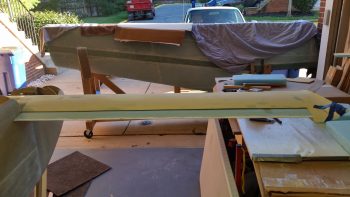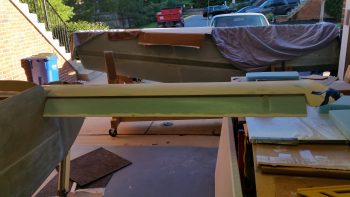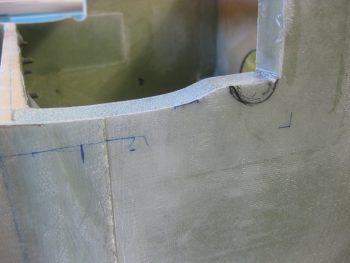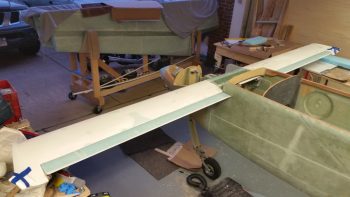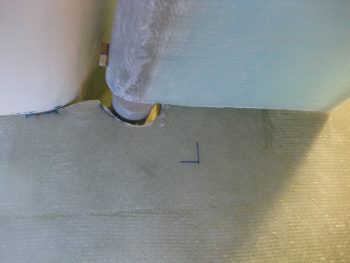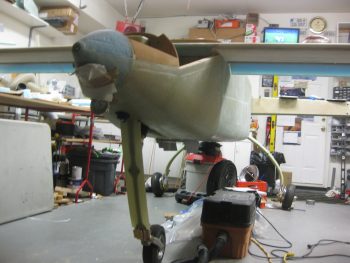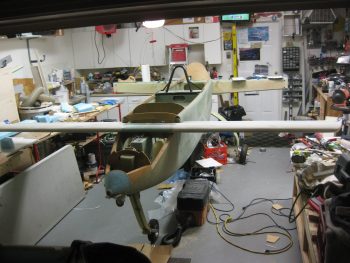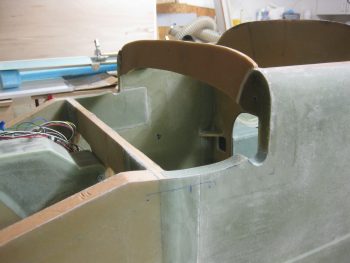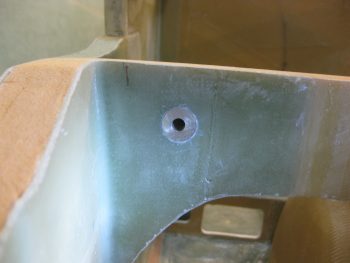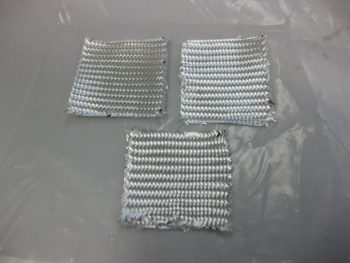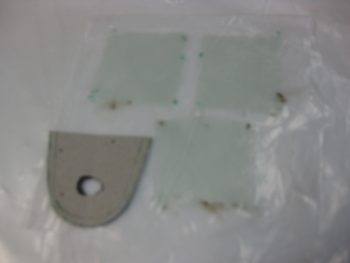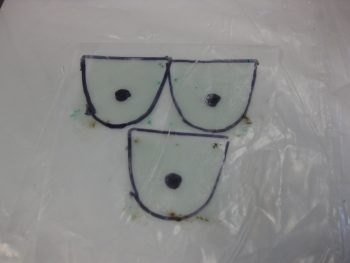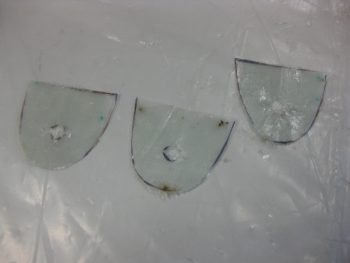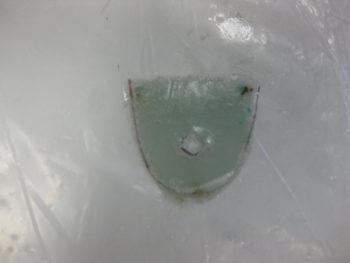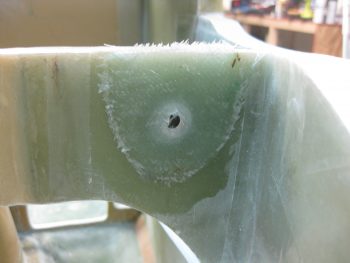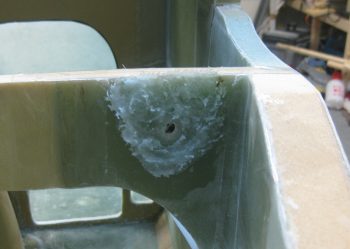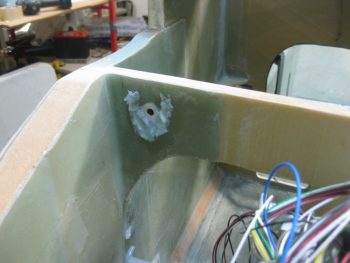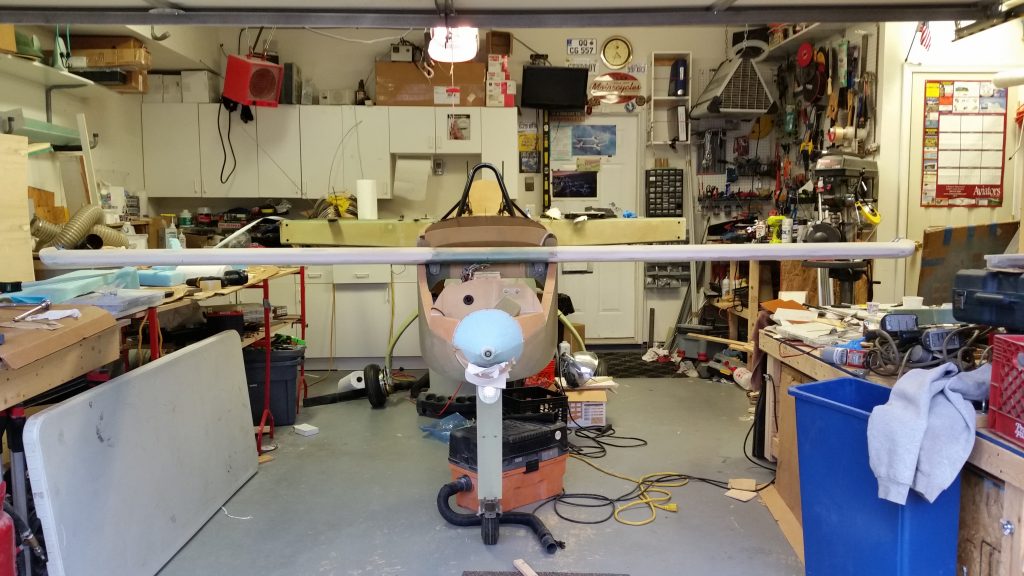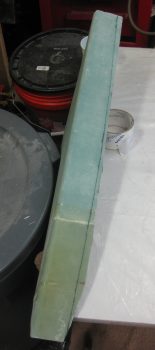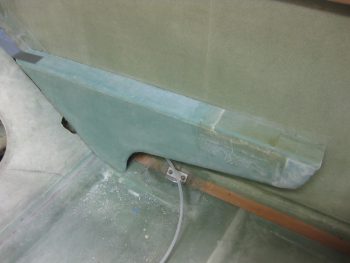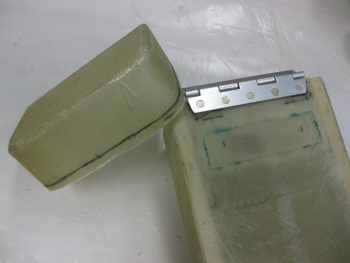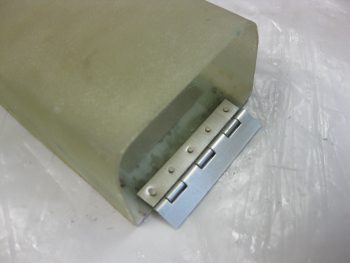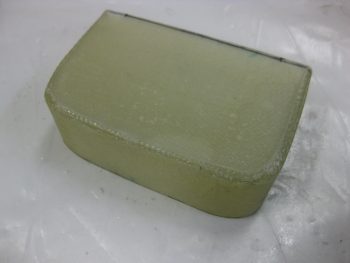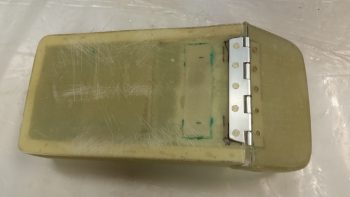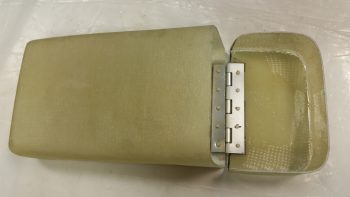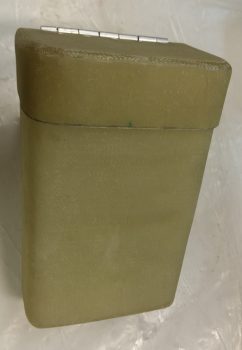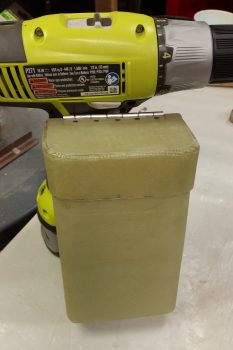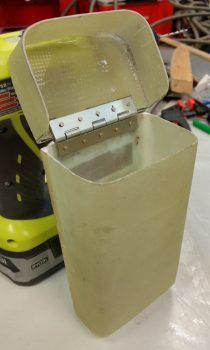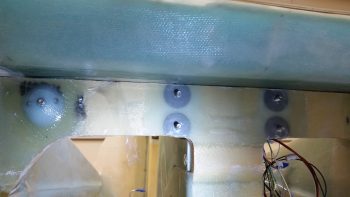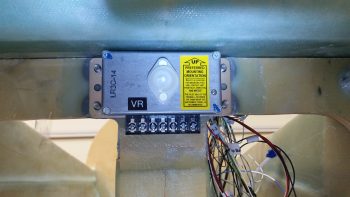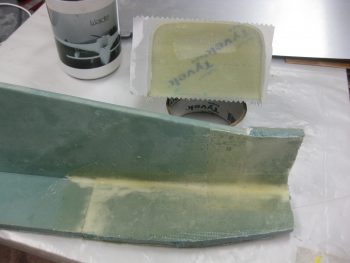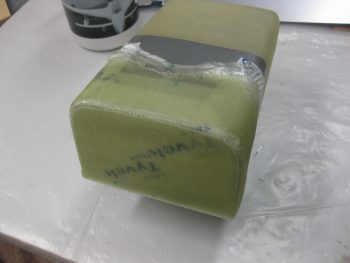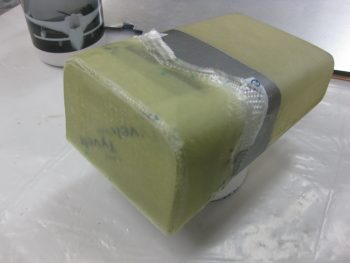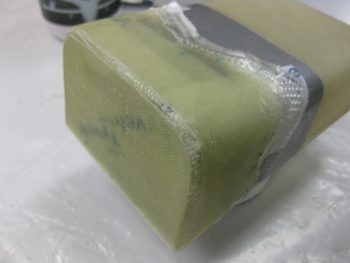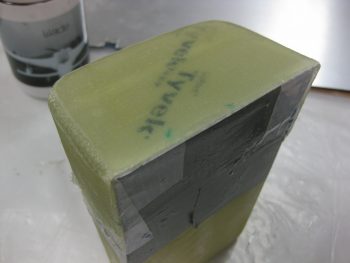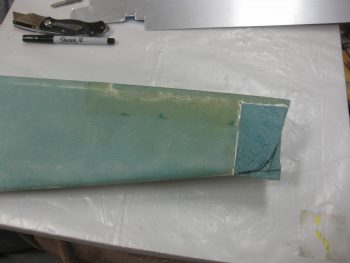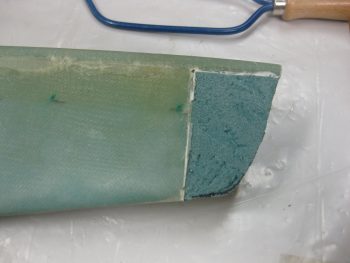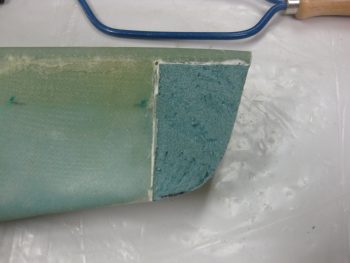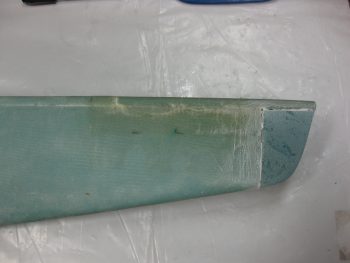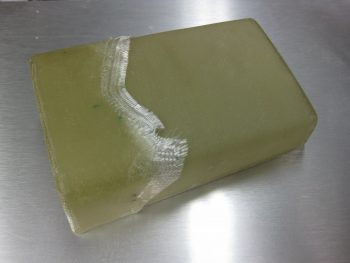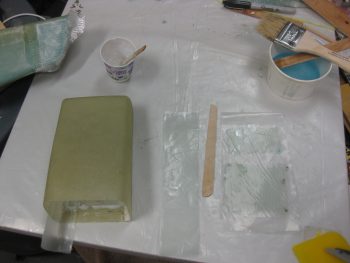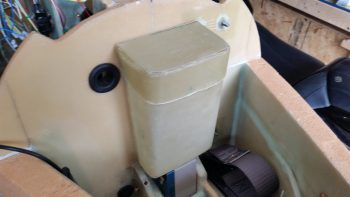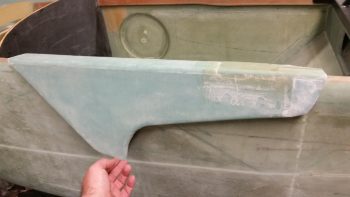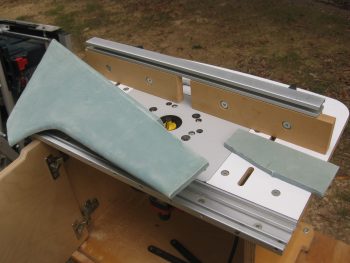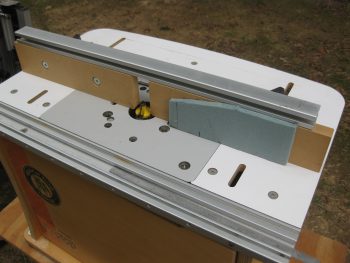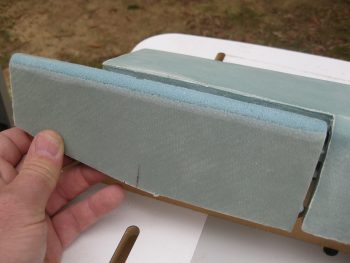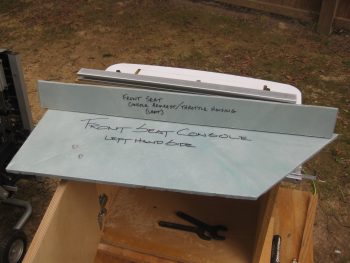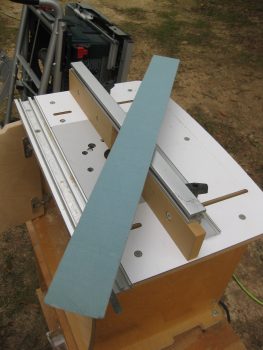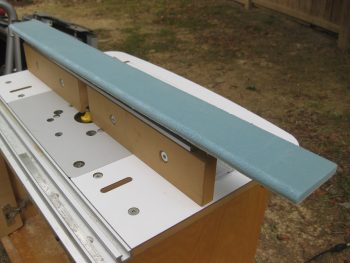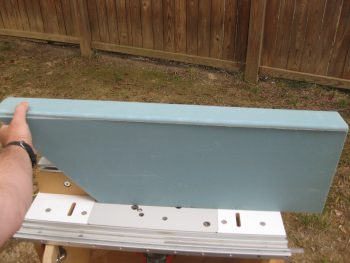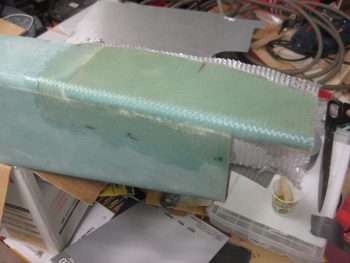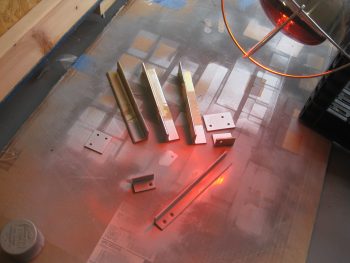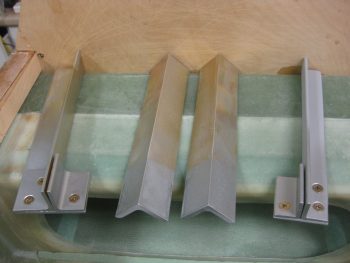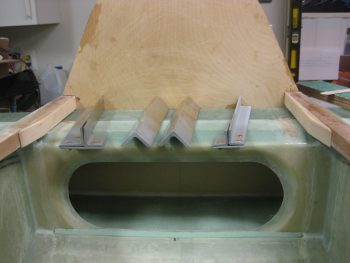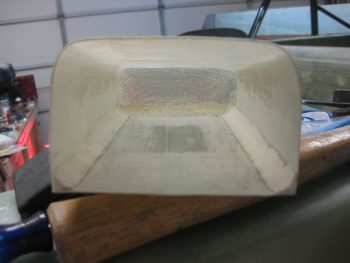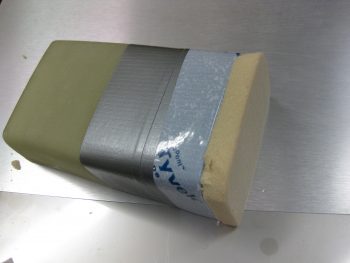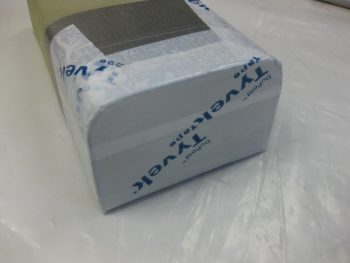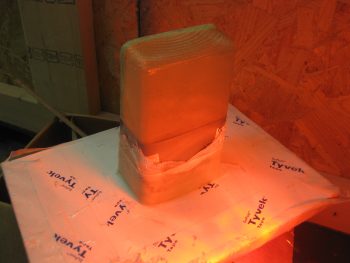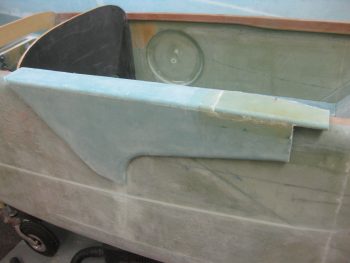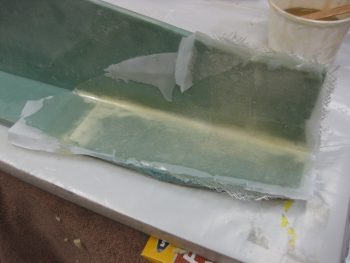First thing today I checked the layups on my longeron doubler extensions. I pulled the peel ply and cleaned them up a bit.
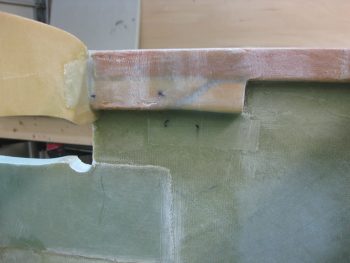
The left side looked good as well. The extension piece may look like it’s drooping a bit on the aft side, but this is due to my wanting a bit more wood to drill into since my 3/16″ upper alignment pin hole angles down slightly.
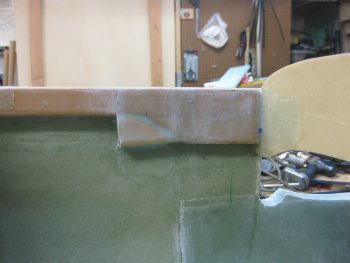
Well, as you can see here!
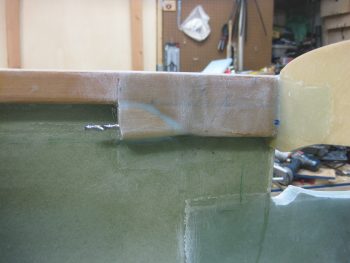
And it angles even more so on the right side (which I didn’t think it did) so I should have angled the extension piece just a tad more… oh well, it will definitely work.
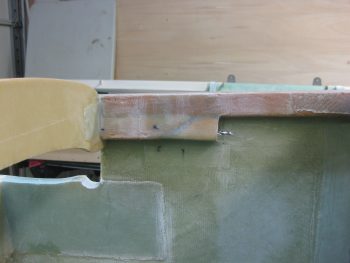
I then started work on shaping the canard filler pieces to “wrap” around the elevator torque tube offsets. To get a good idea of the alignment, I started by drilling a 1/8″ hole through the inboard hinge bracket, through the filler piece at nearly the exact spot the hinge pin would pass through.
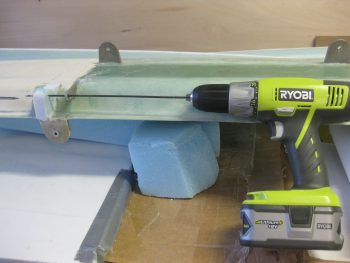
I then hopped over to the outboard side and drilled a #10 hole through the filler piece using the 1/8″ hole as a pilot hole.
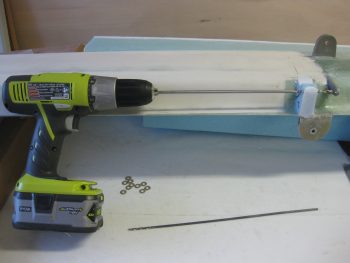
I then simply pressed the hinge pin through with Eze.
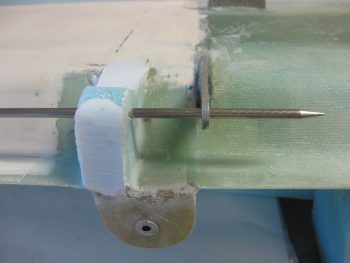
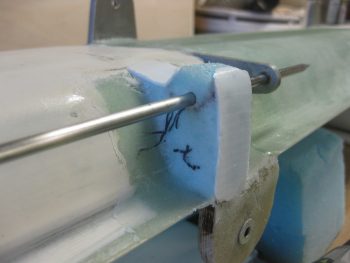
I then repeated the same process on the right side (which is the left side of the canard).
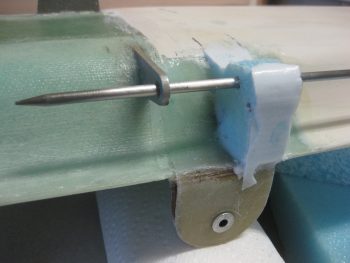
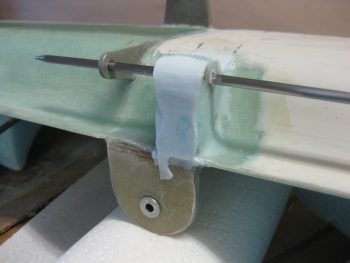
With a known center point on each filler piece, I then carved out a circular area around it as a starting point for fitting in the torque tube offset.
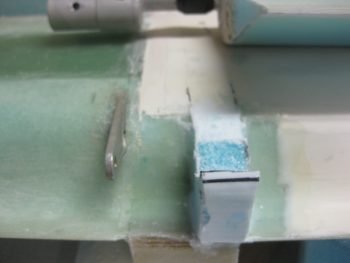
I then started the cycle of test fitting the tape-wrapped torque tube offset into the filler piece. I would cut and sand some of the filler piece material off, then test the torque tube offset. Repeat.
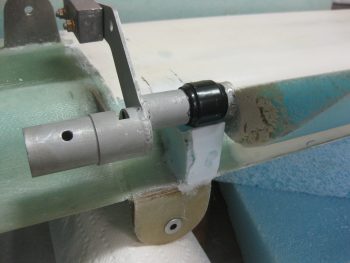
Here’s the first round, with the black mark showing more filler piece material that required extrication.
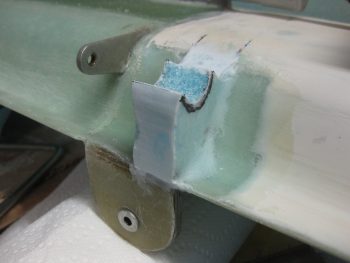
After a few cycles I got so that there was a very small gap around the tape-covered torque tube (which is exactly what the tape is for).
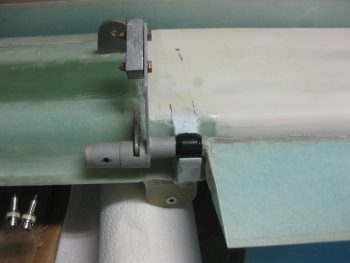
With a better idea of exactly how much material required removal from the left side, my first material-removing step out of the gate on the right-side canard was much more substantial.
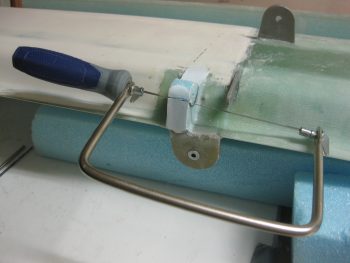
Of course it still took a few cycles to get it dialed in.
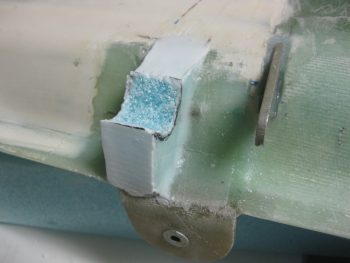
Using my trusty round Perm-a-grit sanding tool along the way (still love these things!!).
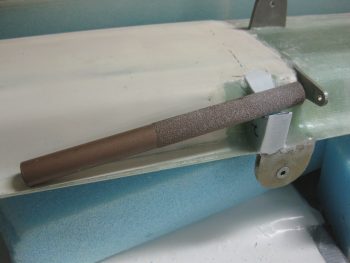
And Voila! Fini!
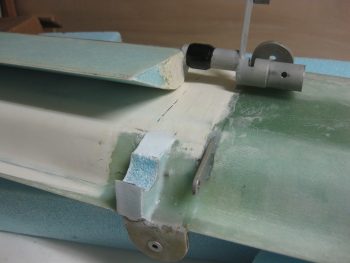
I then dug out the foam on both filler pieces in prep for some Flocro.
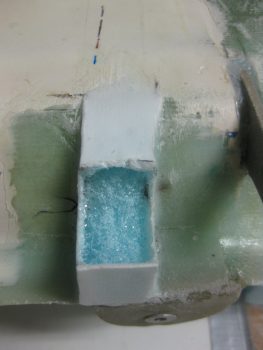
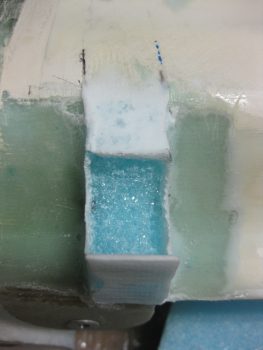
Since this is simply filler material to block air, I used my OLD MGS 335 epoxy that I bought years ago and whipped up some Flocro. I applied it liberally into the freshly dug troughs in the filler pieces.
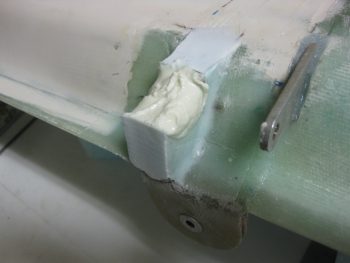
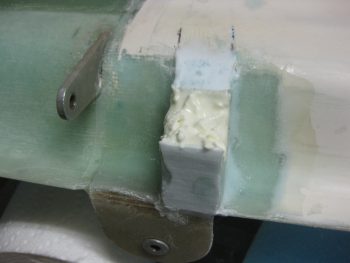
And then mounted both elevators in place.
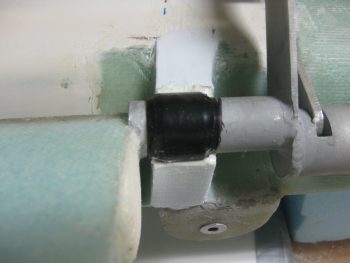
Of course I had to scrape a lot of excess Flocro that oozed out, but afterwards it all looked nice & tidy. I then left the elevators, filler pieces & canard alone to let the Flocro cure.
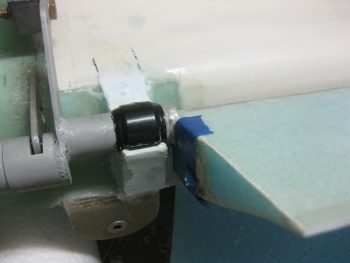
My next task was to widen the hole in the pilot’s seat where the flight controls transition through. Due to my use of the Cozy Girrrl control sticks, and my subsequent remounting of CS109 & CS118 control mounts –to kick the control tubes 3/4″ inboard– I now have to deal with 2nd order affects in that the control tube transition hole in the front seat is too narrow. To be fair, it was nearly too narrow from day 1, no matter how I configured the controls.
Regardless, it was time to enlarge the hole in the front seat.
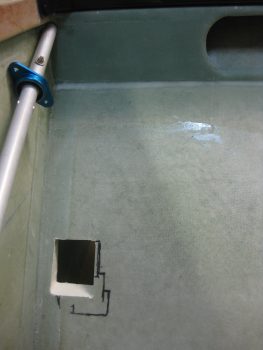
As you can see, I marked it off using a very scientific method called “eyeballing it”. I will state that my initial crazy pattern here is not my own, but one I plagiarized from my build buddy Dave B. So if it looks weird, blame him! ha! (Love ya Man!)
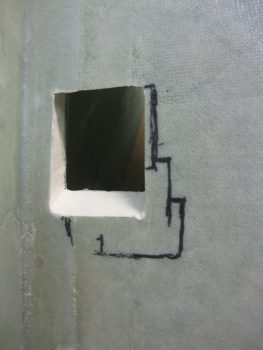
I then used my Fein saw and a hack saw blade to make the initial cuts.
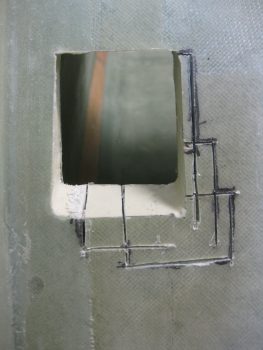
I had originally planned on working on my control system at this point, but since I had whipped up so much flocro for the canard filler pieces, I went ahead and dug out a small trough of seat foam along the sides of the freshly cut extended hole areas and filled in the edges with the flocro.
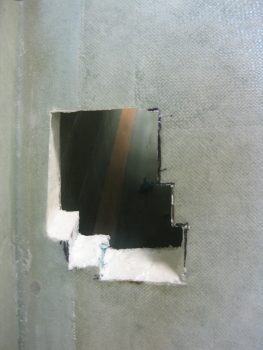
So, with two separate flocro-curing tasks in the “awaiting cure” stage, I had to make myself useful in the shop. I decided to have a little fun and work on mounting my tool box in the nose battery compartment.
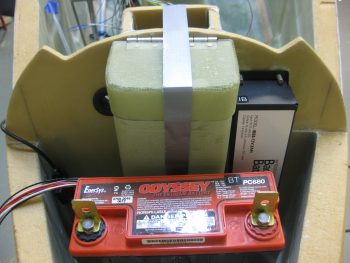
I had originally planned on using button head screws in four (4) places to mount the tool box to the front of the Napster bulkhead. As I pondered the mounting though, I just didn’t want have to deal with “wasting” two K1000-3 nutplates for the bottom mounts… nor did I want to have to try to work at the bottom of the narrow channel immediately behind Napster (made up of the 2 NG30 “goal post” arms).
Since the bottom attach points for the tool box don’t need to be screwed in or out to mount the tool box, and will be essentially forever stagnant in purpose, I decided to simply use Clickbonds as my attach points and even more simply just flox them in place into holes drilled into Napster. Now, the top two button head mounting screws will get K1000-3 nut plates and will be removable.
With my plan devised, I moved forward to set it in motion. I marked off the perimeter of the Clickbonds on the aft lower side of the tool box. I then drilled out the holes so that the Clickbonds could slide into the interior of the tool box. I then took a small drill bit and made notches for each actual Clickbond threaded shaft (albeit not as straight as I wanted them!)… as symbolized by the small black dot looking things at the top of the circles in the pics below.
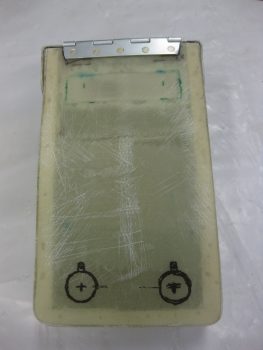
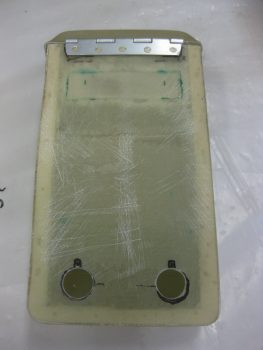
I then placed packing tape on the back side of the tool box to protect it from wayward flox. I also taped the Clickbonds into their respective notches using duct tape on the inside of the tool box.
I sprayed black spray paint onto a stick and while wet applied it to the tips of the Clickbonds. I then carefully & gently lined up the tool box into its final mounting spot and pressed the lower tool box –and the Clickbonds– against the face of Napster. I then had 2 marks to identify my drilling points. I used the long 1/4″ drill bit to make my initial holes, but at an angle since space is tight in the nose. I then cleaned up & straightened the holes using another bit, by hand.
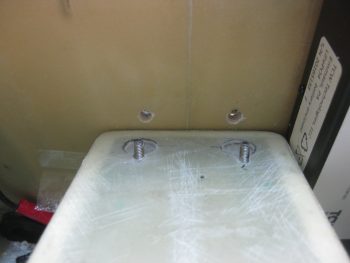
I then whipped up some flox and filled in the 2 drilled mounting holes. I also slathered some onto each Clickbond and set the tool box in place. I taped it in place with duct tape and let it alone to cure.
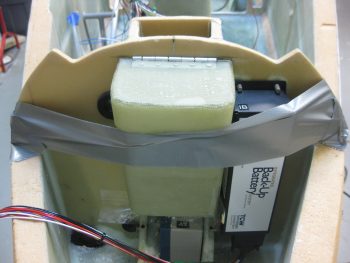
With 3 separate build parts all in the curing stage, I decided to prep the foam for the fuselage side of the torque tube offsets, where it too will get some flocro. When this flocro goes in, it will finalize the other half of the elevator torque tube mounting hole –of course the elevators with their taped-up torque tube offsets, as well as the canard, will have to mounted for this flocro to be shaped correctly.
Nonetheless, it gave me something to do for 5 minutes.
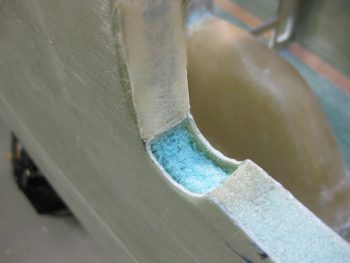
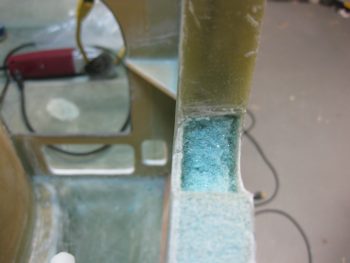
By this point, the flocro was slightly cured, so I covered the bottom of the pilot seat back control tube hole with packing tape and pressed on with the flight control system test fitting.
I quickly realized yet another 2nd/3rd/whatever order affect from moving the control tube inboard 3/4″, and that was now the hole in the Instrument Panel bulkhead was too narrow for the control tube that goes forward & links to the elevator torque tube. Thus, I marked it for cutting as well.
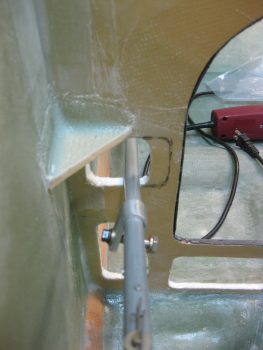
Since this is really tough foam, I drilled small holes along the cut line. I then disassembled my coping saw and put it back together with the blade on the inside of the hole that needed to be opened up.
[I opened up the hole, but apparently forgot to take any pics of it. But you can see the widened hole to a degree in the pics of the control system below.]
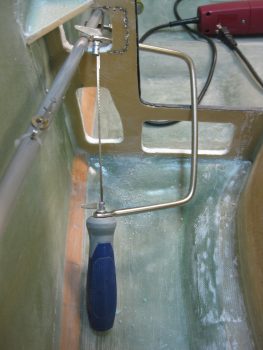
I then mounted pretty much all of the flight control system in the cockpit.
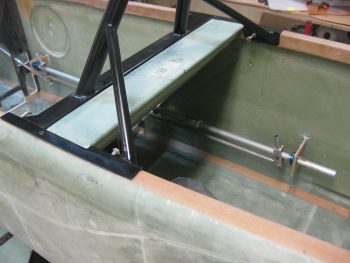
Here’s the aft (GIB) control stick.
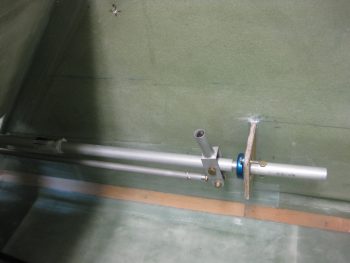
And the pilot’s control stick.
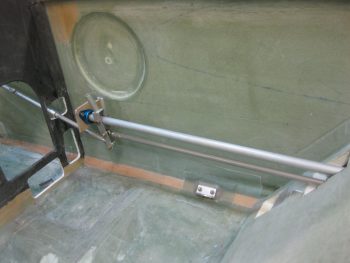
A close up of the pilot’s control stick assembly.
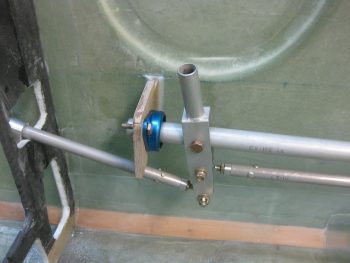
I then set the arm rest consoles in place. Both the front seat . . .
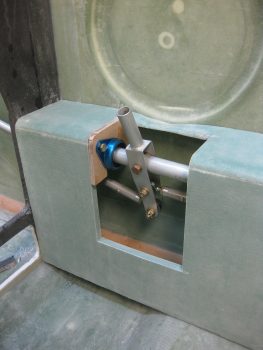
and the back seat. Of course I had to throw on the actual control stick grip as well!
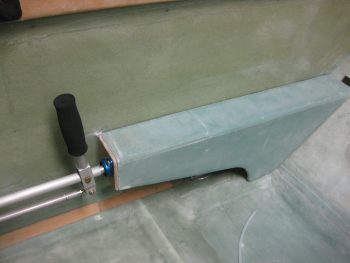
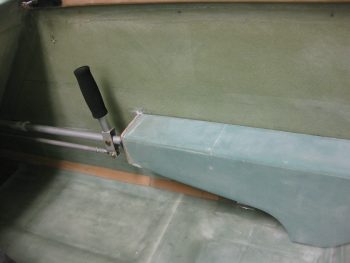
And, with multiple items in the curing stage, here’s the grand finale shot of the evening!
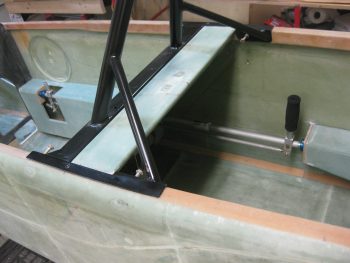
Tomorrow will be a fairly light build day since I’m heading out tomorrow afternoon to have dinner with friends. I’ll check on & clean up today’s tasks… and I need to do some research on the control system as well. But I’ll back on the build full tilt on Saturday.

